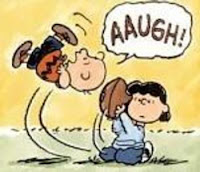
Most strategists have been relatively sanguine in their comments regarding the recent string of weak economic data. The stock market has also been weak, but this is not totally unexpected after a strong first quarter.
After all, we saw the same pattern last year - a good start to the year, a mid-year pause, then a strong finish.
However, as also I noted yesterday, the people closest to the economic data are worried. It's not so much that May's employment report was well below expectations - after all, it's only one month - but rather the trend of economic reports is unmistakably lower.
The difference between 2010 and this year is the tone in the political debate. Fiscal policy discussions are mostly focused on how to cut spending, rather than new federal programs that might help job creation.
Fed policy is also unlikely to be as friendly as last year. The financial system is already flooded with liquidity, and lower interest rates appear to have had only a minor impact on interest-sensitive areas like housing.
Last year, stocks moved sharply higher with the added stimulus of the Fed's QE2 (remember Bernanke's editorial in the Washington Post advocating high stock prices?). In addition, Congress passed a number of tax incentives at year-end designed to bolster economic growth.
At the time, economists were falling over themselves to raise economic forecasts. This optimism now appears to have been premature.
Now, in mid-2011, it seems more likely that the government will slash spending in an effort to reduce the federal deficit. And judging from comments from Fed officials (other than Bernanke), there seems to be more internal debate about the need to raise interest rates to head off a possible surge in inflation rather than continue the current accomodative policies.
If this becomes the direction of government policy, I will need to seriously re-evaluate my current bullish stance on stocks.
The best analogy can be found a couple of generations ago, in 1937-38.
Paul Krugman writing in the New York Times last Friday had a good piece about the parallels with 1937. Here is an excerpt from his piece:
Earlier this week, the Federal Reserve Bank of New York published a blog post about the “mistake of 1937,” the premature fiscal and monetary pullback that aborted an ongoing economic recovery and prolonged the Great Depression. As Gauti Eggertsson, the post’s author (with whom I have done research) points out, economic conditions today — with output growing, some prices rising, but unemployment still very high — bear a strong resemblance to those in 1936-37. So are modern policy makers going to make the same mistake?
http://www.nytimes.com/2011/06/03/opinion/03krugman.html
And here's what Fortune magazine writes earlier this week:
As the Eggertsson paper notes, the Fed's fearful tightening in 1937 halted a recovery that had taken years to develop and dealt sharp blows to employment and production (see chart, above right). A premature response to the next energy shock could surely do the same to the current economic upturn, as shallow as it now appears.
Why the Fed will repeat its worst error - Term Sheet
No comments:
Post a Comment